Afternoon slides into evening in Marrakech, and the city begins to blush. In the dusty tangles of its ancient medina, the pink clay buildings turn from sandy red to milky rose as the sun falls behind the Atlas Mountains. The souk becomes a shadowy maze of glinting silver and Hessian sacks toppling with sticky soap and fiery spices. Bunches of unraveling wool stained lilac, yellow and crimson hang like vines from drying lines. The call to Allah rings out into the warm air, while the moon climbs into sky. This precious hour between day and night illuminates the city, and at times the walls of the medina can feel untouched by time.
As the working day draws to a close in Marrakech’s oldest district, the traders of the Rahba Kedima spice market begin to pack away their towers of spices, sending plumes of peppery scent into the air. The maddening cries of the medina fall away as darkness descends, and the rituals of the evening begin. For the traders of this particular square, the end of the day comes hand in hand with a visit to Café Chaab, one of the city’s oldest cafes. Unsigned, unadvertised and unassuming, this small cube of a room is where they come to play cards, smoke pipes and drink lashings of hot mint tea into the night.
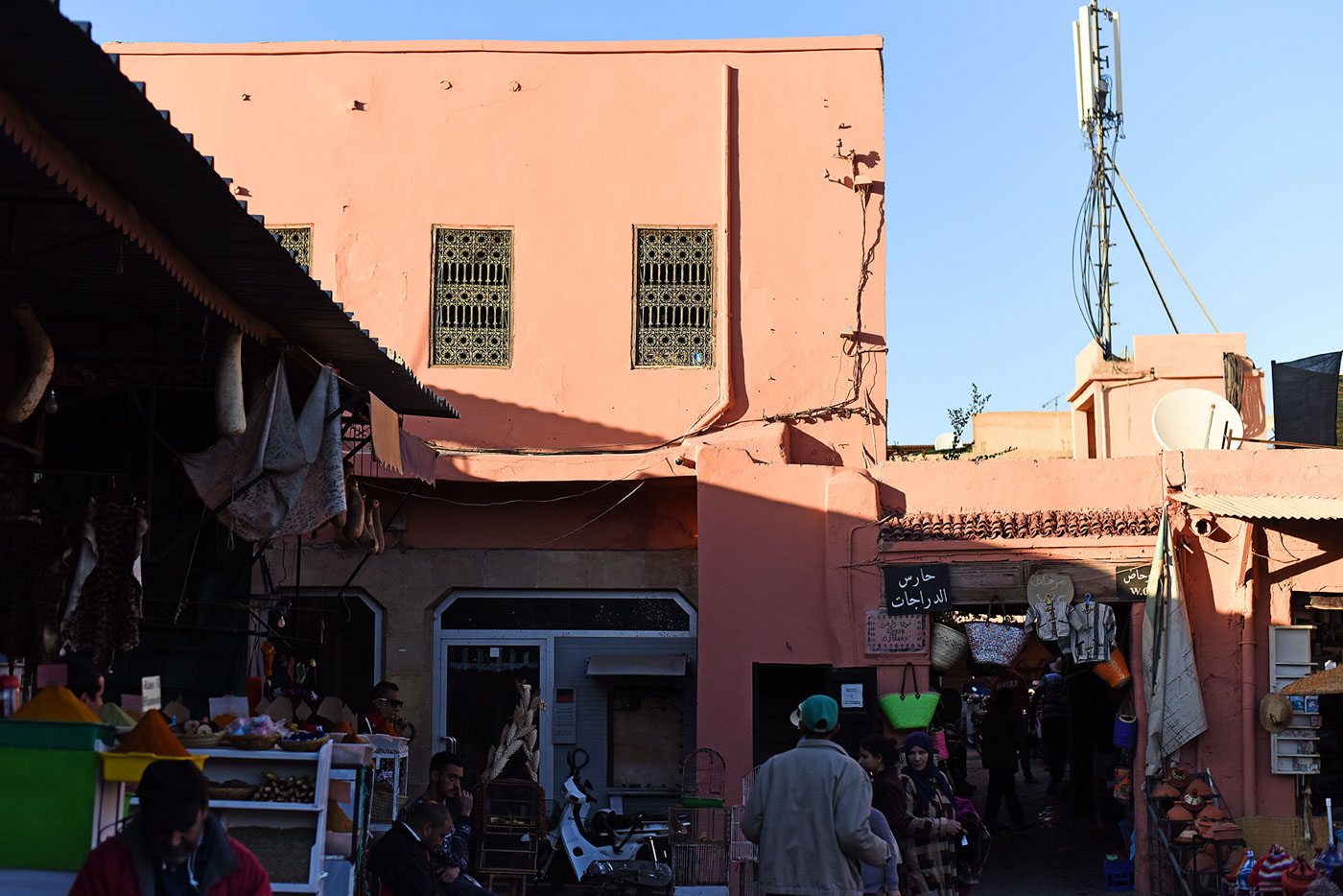
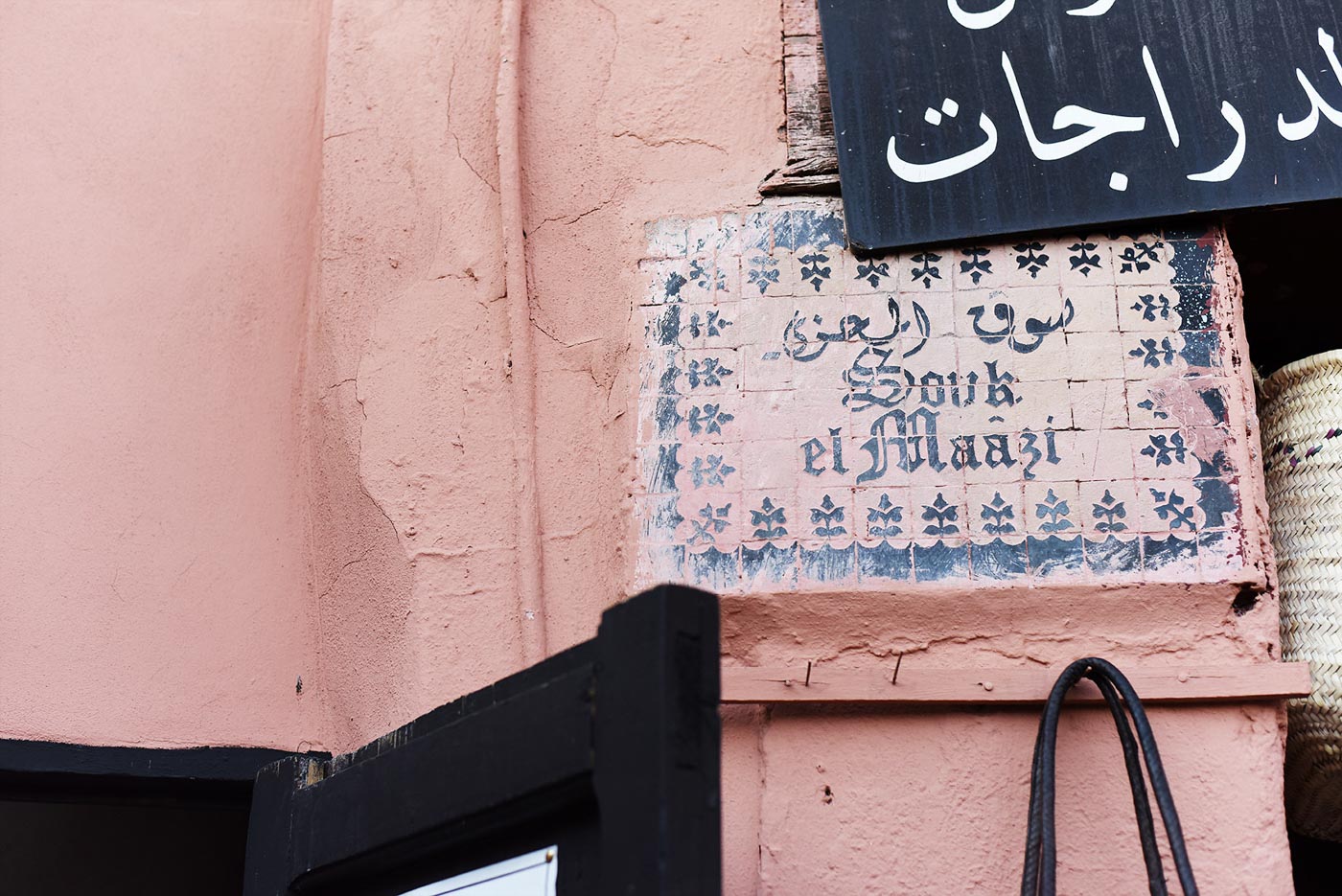
The beguiling warmth of Morocco not only comes from its heady souks, ancient crafts and endless shades of color, but from its people. Two days into our visit and we had ridden on the back of a Vespa to a ceramics village at the foot of the Atlas Mountains, been invited for a tagine tasting at an opulent riad hidden behind a heavy wooden door in the medina, been taken to an Arabic storytelling session at sunset and been led through the souks by locals when we were at our most lost.
We called upon our favorite––a “medina boy” turned restaurant developer and festival director called Oussama––to show us the most beautiful café in the city. Without blinking, he obliged, expertly weaving us through the market, which brimmed with flapping birds, baking bread and carts stacked with copper lanterns, to the door of Café Chaab. Inside, we were greeted by the young manager; his glimmering smile made it feel as if he’d been waiting for us all day.
In a city drenched in decoration, this simple room felt like a breath of fresh air. Low woven chairs surrounded small wooden tables, some with small mountains of semolina bread left on top. The entire room is stripped and bare, lit by jumpy open flames cooking four pots of tagine, which we are told are the best in the city. But the back wall––a peeling canvas of emerald, white and copper paint––gives this modest space something special and unspoken; a romantic majesty.
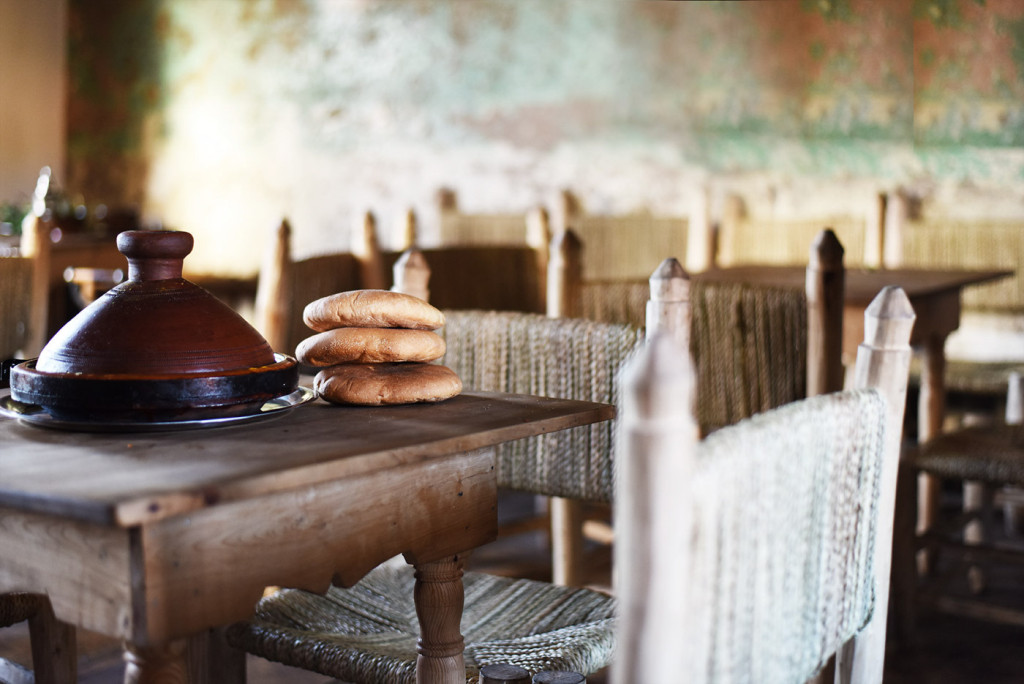
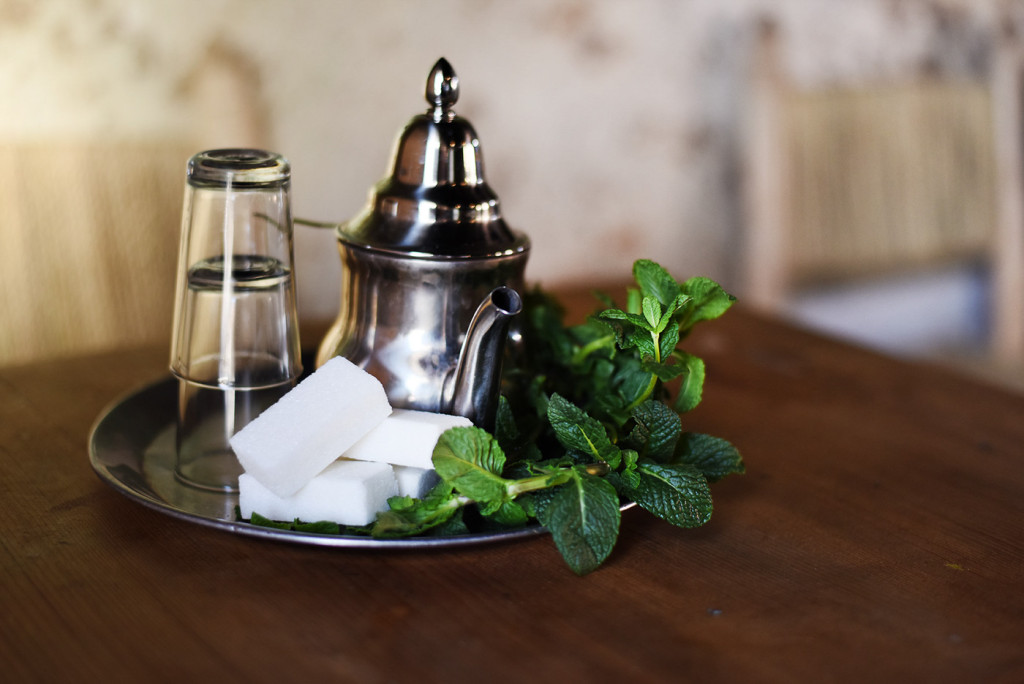
Small glasses of fragrant, maddeningly sweet mint tea punctuate time in Marrakech. This rich amber liquid is drunk throughout the day from morning to evening. The sight of it being prepared, the muscle memory of locals raising the spout of the teapot high in the air, bringing a stream of it spluttering down into the glasses and then splashing back into the pot again to strain, becomes irretrievably linked to the memory of Marrakech for visitors. So too does drinking it. That initial sip, at first so sweet it sends shivers down your jaw, quickly begins to soothe you.
As the afternoon light came streaming in through the iron grates, Café Chaab’s manager showed us his tried and tested method for the perfect pot of mint tea. His ingredients? Thick, vivid green leaves bought from the market down the road, his favorite white sugar, boiling hot water and enough height in his pour to create “perfect bubbles, like beer!” The result was sweeter than we’d ever tasted, darker in color and fuller somehow. This is the difference between the elixir of the locals and the weaker, watery kind aimed at tourists. This was the real stuff, and this was the place to be drinking it. We stayed for an hour or so, sipping slowing and leaning against that accidental artwork of a wall. Our only company the two men sitting in the far corner, scooping up the last of their tagines with hunks of bread. As soon as their lunch was over, the manager brought them a pot of tea, which they drank in seconds. Restored, they rose to their feet straight afterwards and headed downstairs to the bustling square below.
“They will be back tonight. With all the others.” Oussama said, smiling. And though we would not be there to witness this precious ritual, the saccharine taste of mint tea in that small jewel of a place was enough to understand it.
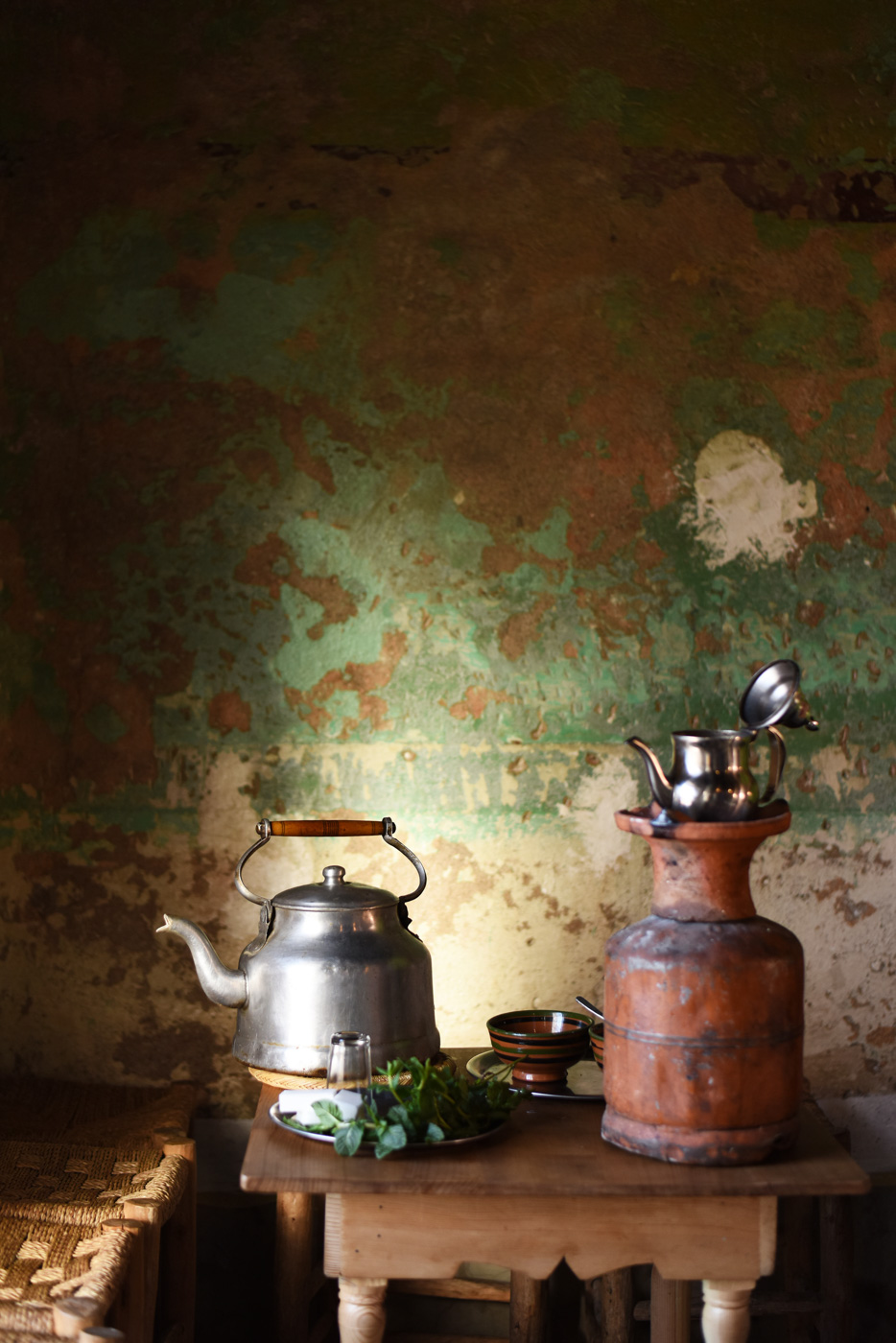
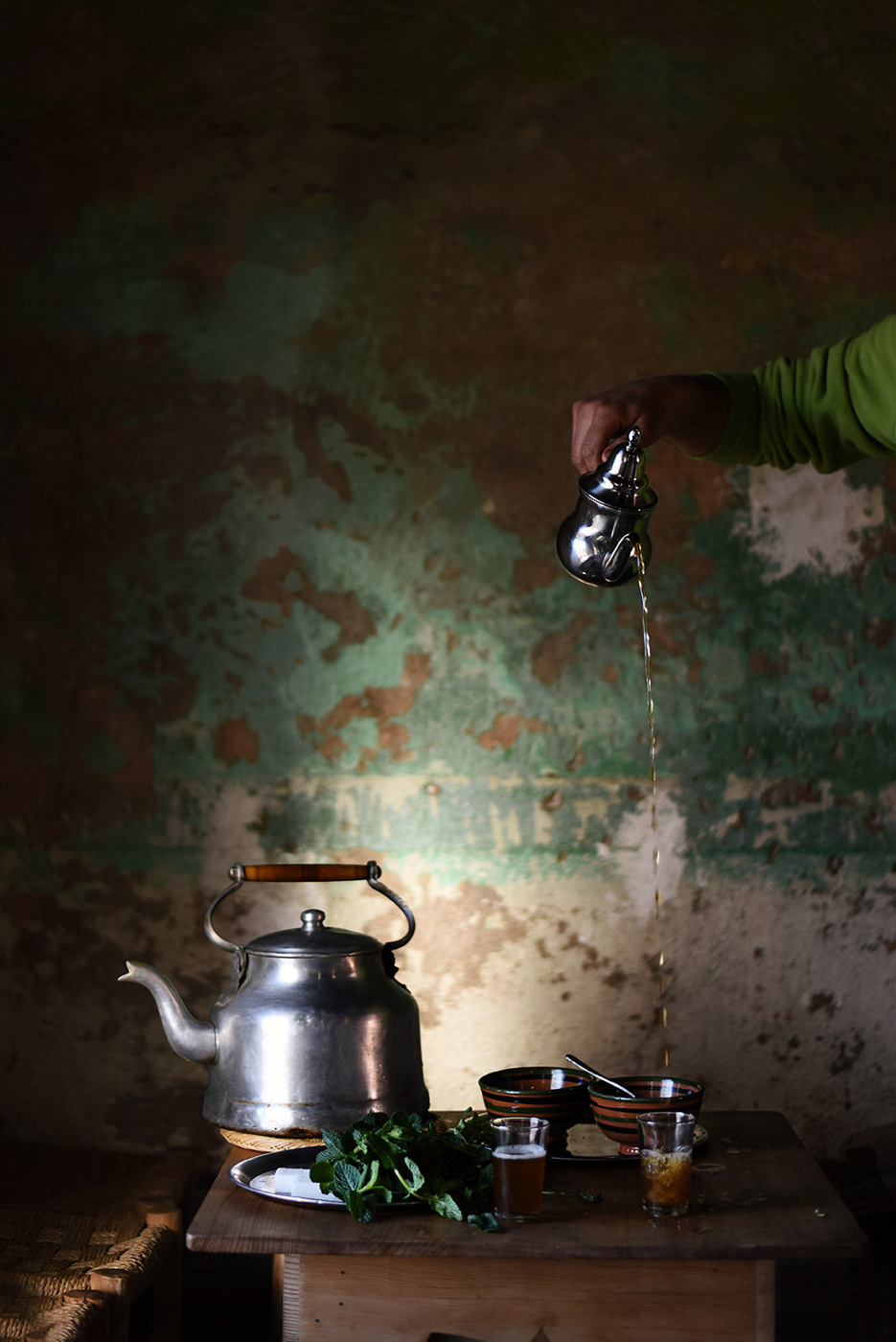
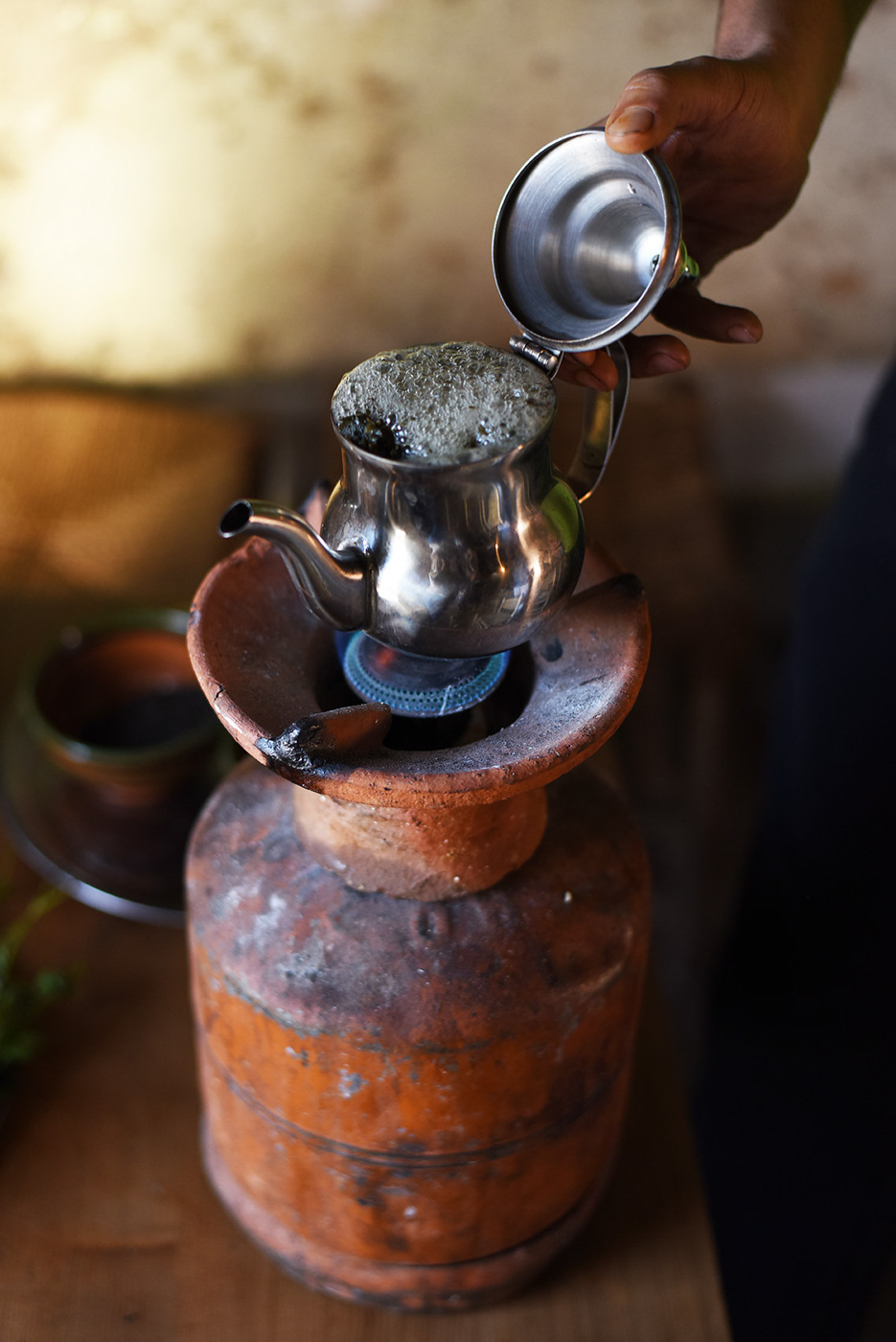
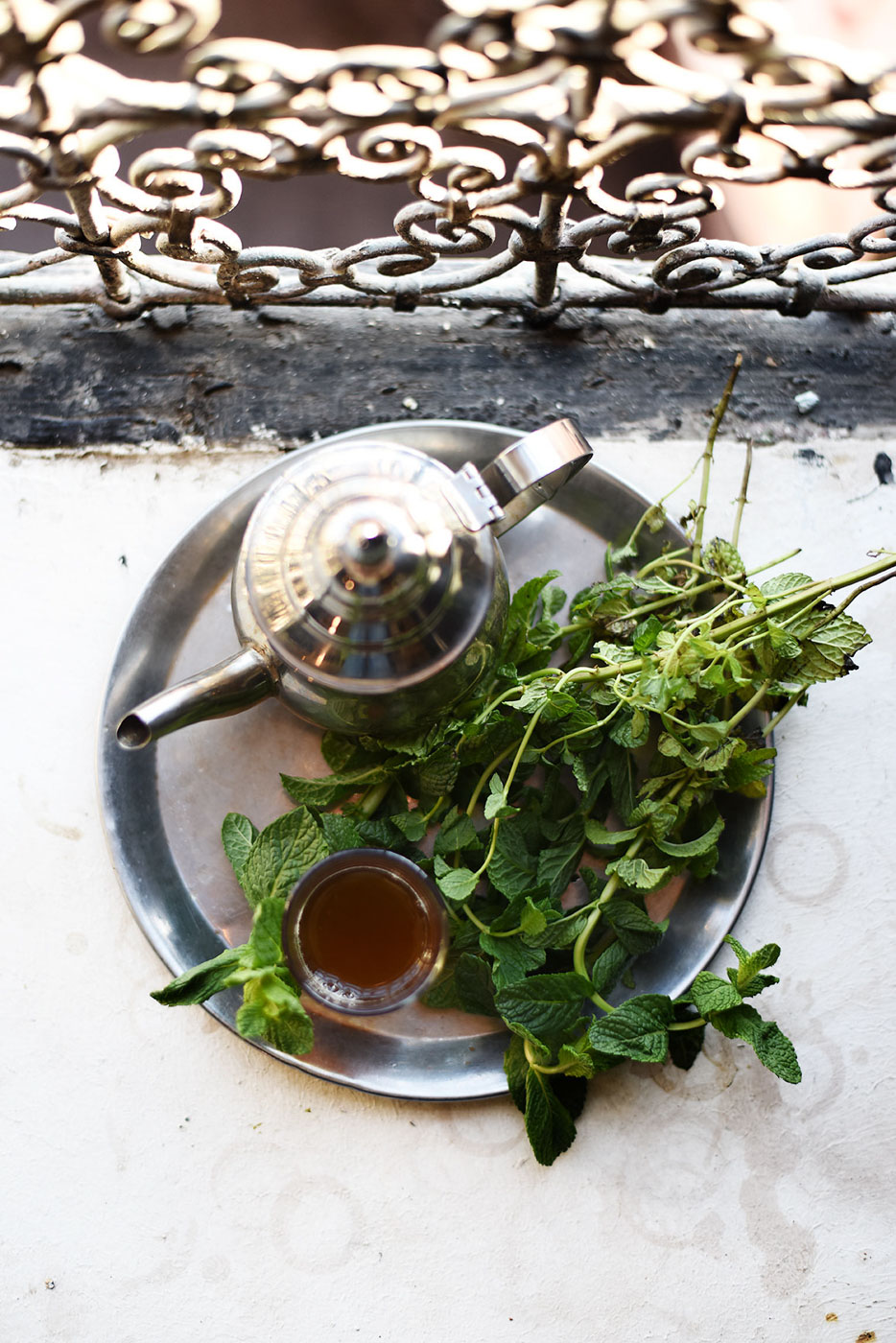
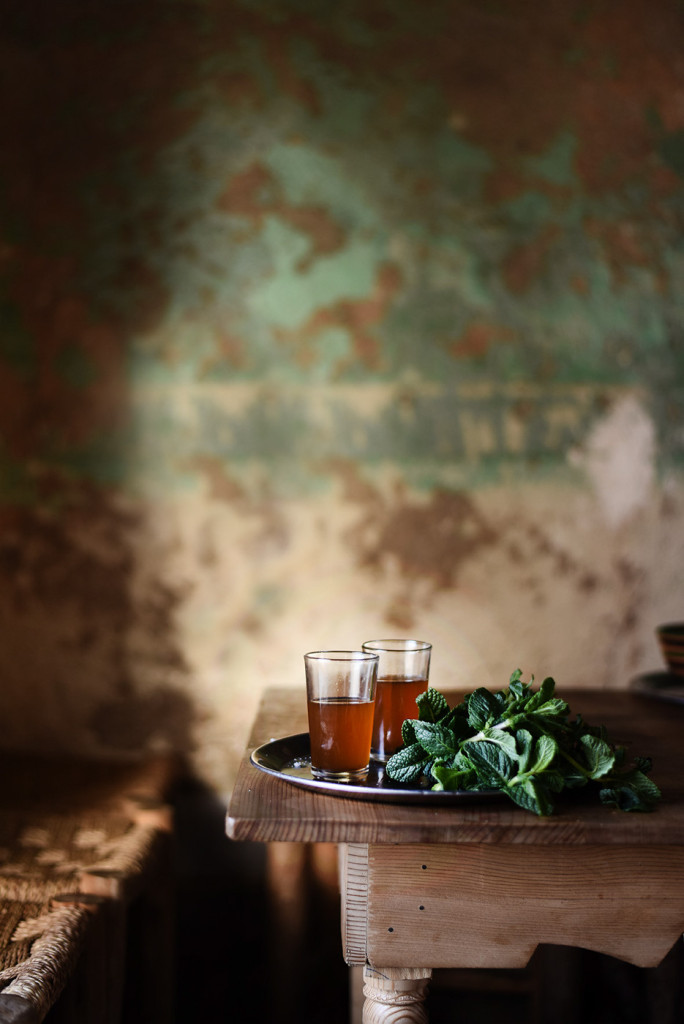
Café Chaab Mint Tea
Ingredients & Tools:
- 1 teapot
- 2 teaspoons loose black tea leaves
- Sugar, to taste
- Boiling water
- Fresh mint leaves (one large handful)
Method:
- Place tea leaves in the bottom of the teapot.
- Break mint stalks in half to release the flavor and place into teapot
- Pour boiling water over the leaves, nearly to full
- Place the teapot on a gas stove for 30 seconds (or until boiling again)
- Add sugar
- Pour one cup of tea into a glass and pour back into teapot (for extra flavor)
- Repeat last step 2 to 3 times
- Serve in small glasses with more sugar to taste.





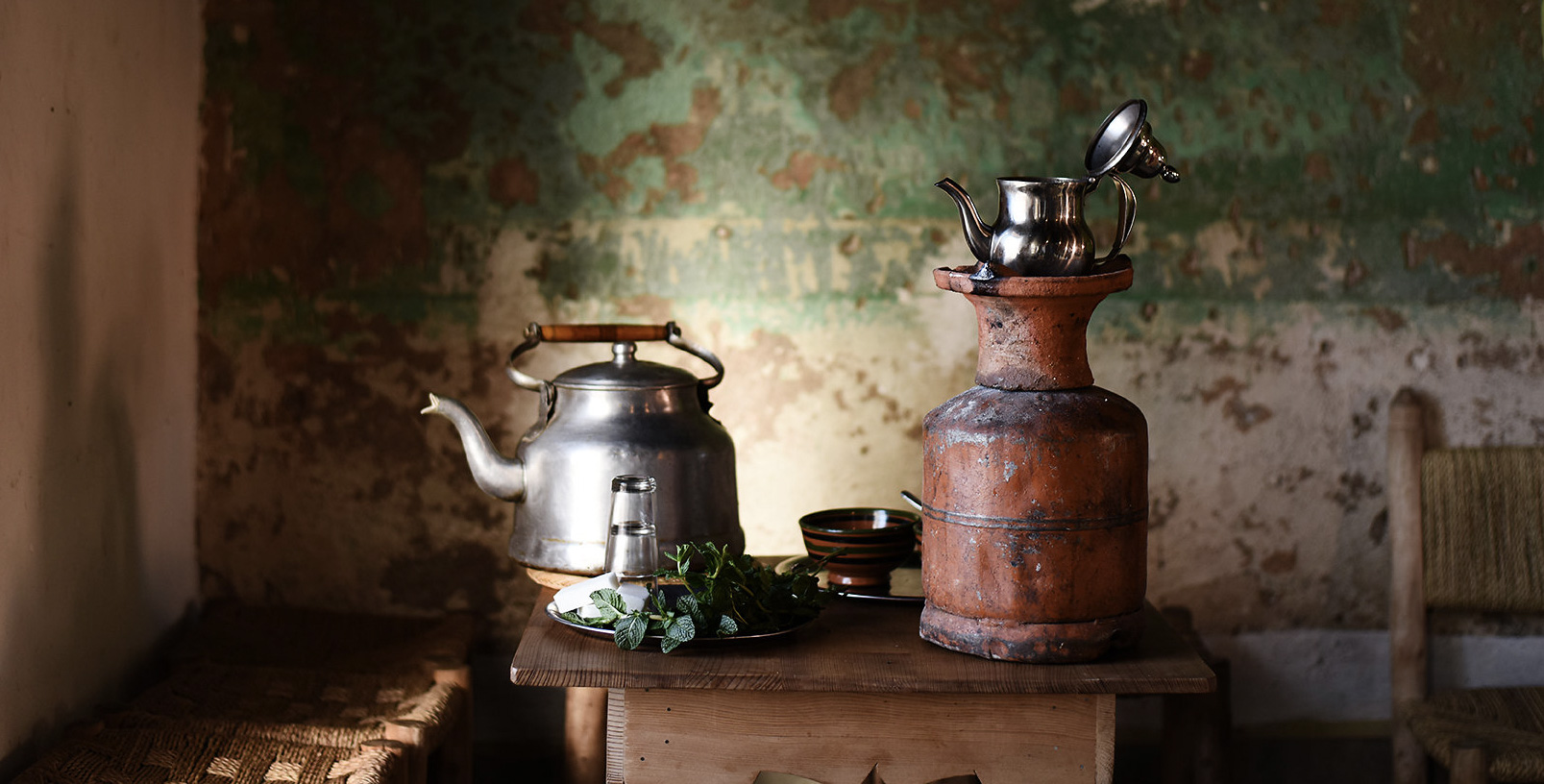

Our comments section is for members only.
Join today to gain exclusive access.